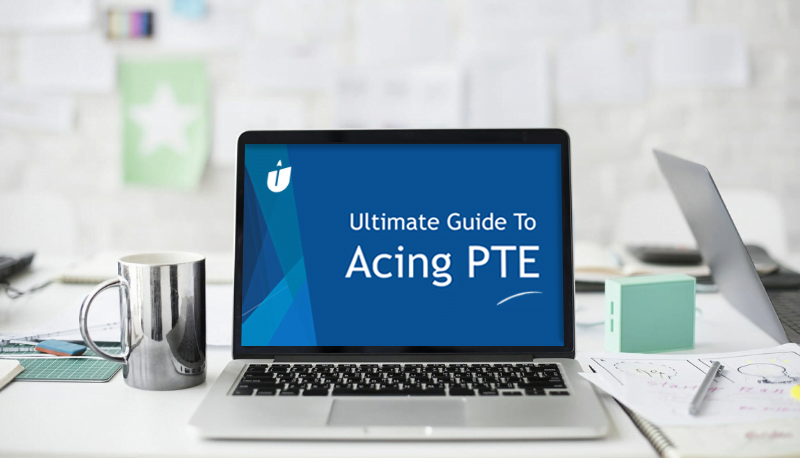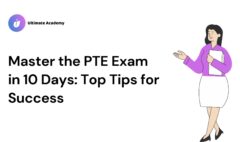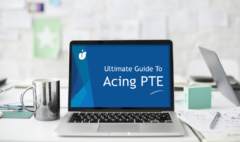How To Answer PTE Describe Image Tasks using Smart Strategy
PTE Describe Image is one of those tasks in the PTE Speaking section that most students struggle with. In fact, if you’ve ever attempted it, you might have found yourself at a loss of words as well.
How can you prepare in just 25-seconds and that speak in structure for the next 40-seconds, which seems like an eternity when you are doing it?
In this blog post, I will teach you everything you need to ace the PTE Describe Image task.
Section 1
-
- Overview of The PTE Describe Image Task
Section 2
-
- Smart Strategy To Answer It Without Sweating
Section 3
-
- Practice Exercise
Section 1: Overview of The PTE Describe Image Task
The first thing to note is that the PTE Describe Image task only contributes to the speaking score in your PTE exam.
This is different from, let’s say, Read Aloud task in PTE Speaking that contributes equally to both your speaking and reading scores.
In this task, you will be shown an image of any of these categories:
- Bar Chart
- Line Chart
- Pie Chart
- Process / Diagram
- Table
- Map
- Multiple Graphs
You will have 25-seconds to prepare your answer.
And then, you will have 40-seconds to record your answer in the microphone.
Let’s get into the Smart Strategy to answer it for 79+ score without breaking a sweat.
Section 2: Smart Strategy To Answer It Without Sweating
To make it easy for you to understand, let me break the task down into 2-parts.
These will be called:
- Analysing Phase (25-seconds)
- Answering Phase (40-seconds)
Analysing Phase
The first rule of answering this question is to NEVER write notes when you are analysing it.
25-seconds aren’t enough to take notes of your thoughts. You will only end up losing time.
Instead, make notes in your head.
Use these questions when observing the image to help you take mental notes:
- What is the title of the image? This will be your introductory sentence when you start speaking.
- What is the most observable trend? This is the one thing that catches your eye the moment you look at the image.
- What are some of the other patterns, such as comparison, similarities, differences that you notice?
- Lastly, what is your opinion of the image? This can be what the image is collectively showing or what the image can be summarised as.
Once you are able to answer all these 4 questions in your head in the first 25-seconds, you will breeze through your answer in the Answering Phase.
Even though the time for observation is supposedly finished, you will still keep looking at the image while recording your answer. The image will not disappear. So always keep your eyes on the image.
Answering Phase
In this phase, you will speak your observations from the image.
The trick is to answer it in exactly 5 sentences.
If you answer it in 4 or 6 sentences, that’s also fine. But for your practice, always think of answering in exactly 5 sentences.
And these will be:
Sentence 1: what does the image show?
You need to simply tell what is written at the top and/or at the bottom of the image.
Sentence 2: What is the most obvious observation?
This means you need to look for the most noticeable thing in the given image. It could be a huge drift in the graph, or the most common thing about a place, or something along those lines.
Sentence 3: Compare two things.
It could be a comparison between the highest and the lowest, maximum and minimum, most and least, nearest and farthest, and so on.
Sentence 4: Find a similarity or a difference, or something unusual within the trend being followed.
This gets a little difficult if you are not fluent. But it will become second nature with practice.
Whatever your analysis is, just be confident about it and speak at a normal pace without uttering “umm” or “err”, or repeating your sentence.
Sentence 5: Summarise the entire analysis or form an opinion of your own.
Sometimes you might not be able to fit the last sentence in 40-seconds, and that’s fine. But if you do see 5-seconds remaining on the clock, proceed with this sentence.
Let’s now look at a Practice Exercise and apply this Smart Strategy.
Section 3: Practice Exercise

Before you read any further, I want you to observe the image and write your answer down.
This is a speaking task, but for now, writing it down would give you an idea of your strengths and your weaknesses which will help you to work on your shortcomings in the further practice exercises of this category.
Let us now start breaking down the answer for the above image.
Firstly, the image is showing us a Pie Chart comparing various injury locations.
Sentence 1: This Pie Chart compares injuries by locations, converted into percentages.
Secondly, it is showing us that home is the location where most injuries take place.
Sentence 2: Overall, home is the location where more than 2/5th of all the injuries take place.
Here we converted percentage into a fraction and said that home is the location for 2/5th of all the injuries. However, if this doesn’t come naturally to you, you can simply say:
Overall, home is the location where most of the injuries take place.
For the third observation, we will compare the highest and the second highest percentages, and form a sentence accordingly.
Sentence 3: With 41.4% of all the injuries taking place at home, this category is more than double the second highest location, which is roads at 19.5%.
The next sentence will require good content and fluency, so we can break the entire pie chart down and mention every location in decreasing order of the percentages.
Sentence 4: The other two significant locations are leisure / sports and work, with 17.1% and 15.2% of injuries taking place there, respectively. After this, school / child care contributes about 5% of all the injuries, while 2% of the injuries take place at other locations.
We covered everything that is mentioned in the given image. Now it is time to conclude our entire statement. We can conclude by paraphrasing sentences 1 and 3 in a summarising manner.
Sentence 5: In conclusion, home is the location accounting for most injuries, followed by roads, leisure / sports, and work at 2nd, 3rd, and 4th positions respectively.
The above sentences, when said at one go should not exceed 35-40 seconds.
Let’s put all the sentences together:
This Pie Chart compares injuries by locations, converted into percentages.
Overall, home is the location where most of the injuries take place.
With 41.4% of all the injuries taking place at home, this category is more than double the second highest location, which is roads at 19.5%.
The other two significant locations are leisure / sports and work, with 17.1% and 15.2% of injuries taking place there, respectively. After this, school / child care contributes about 5% of all the injuries, while 2% of the injuries take place at other locations.
In conclusion, home is the location accounting for most injuries, followed by roads, leisure / sports, and work at 2nd, 3rd, and 4th positions respectively.
Read the above paragraph and record your time. For me, it took about 37 seconds at my natural pace.
In this blog post, I’ve explained what the PTE Describe Image task is and how you can effectively solve it to get 79+ in your PTE Speaking.
In my full course, Ultimate Guide to Acing PTE, of 67 video lessons of 12 hours, I go deep into the strategies, hacks, and techniques to help you learn all 4 sections of PTE in a smart way to get 79+ Score.
You can see all the details of the Ultimate Guide To Acing PTE below:







